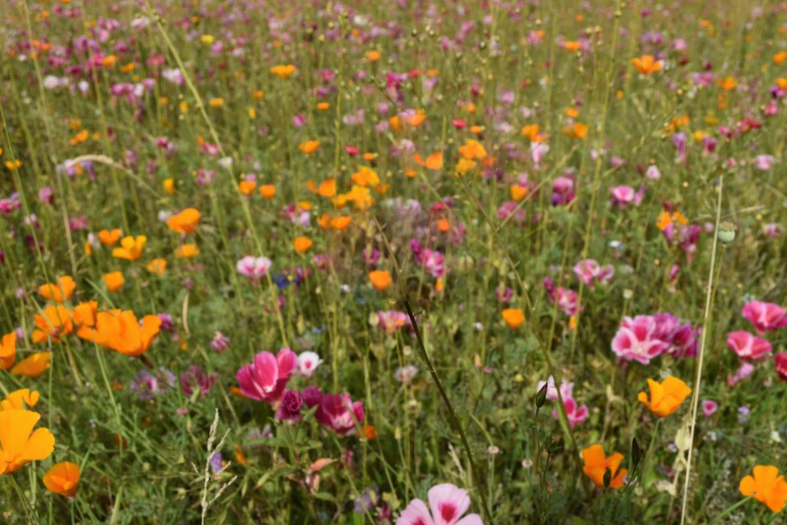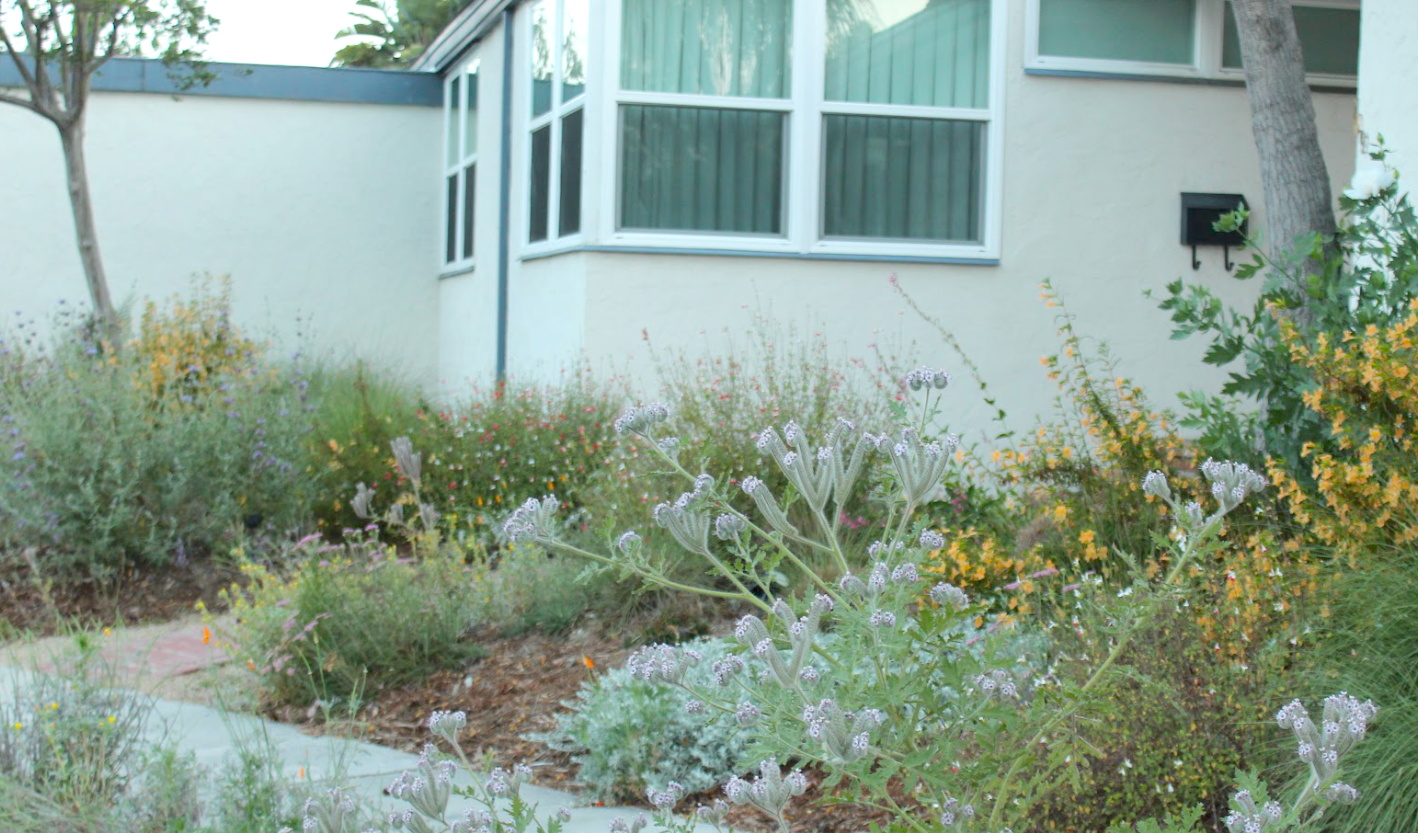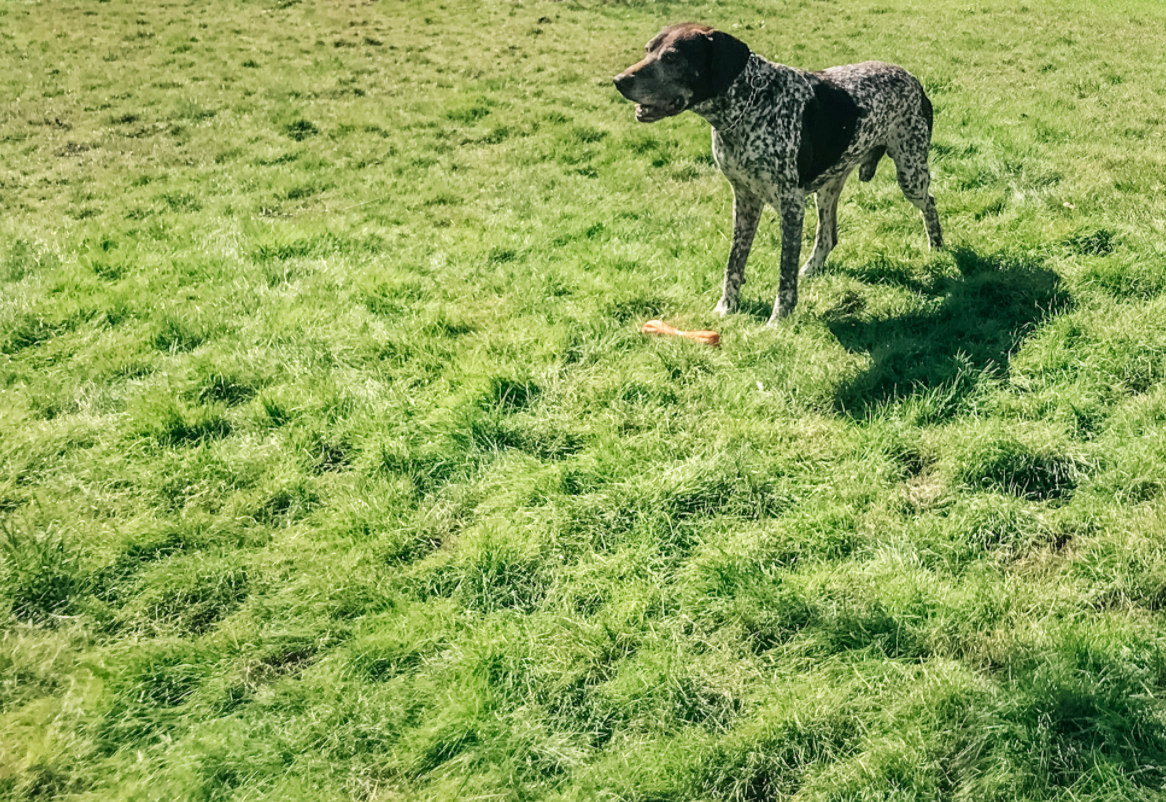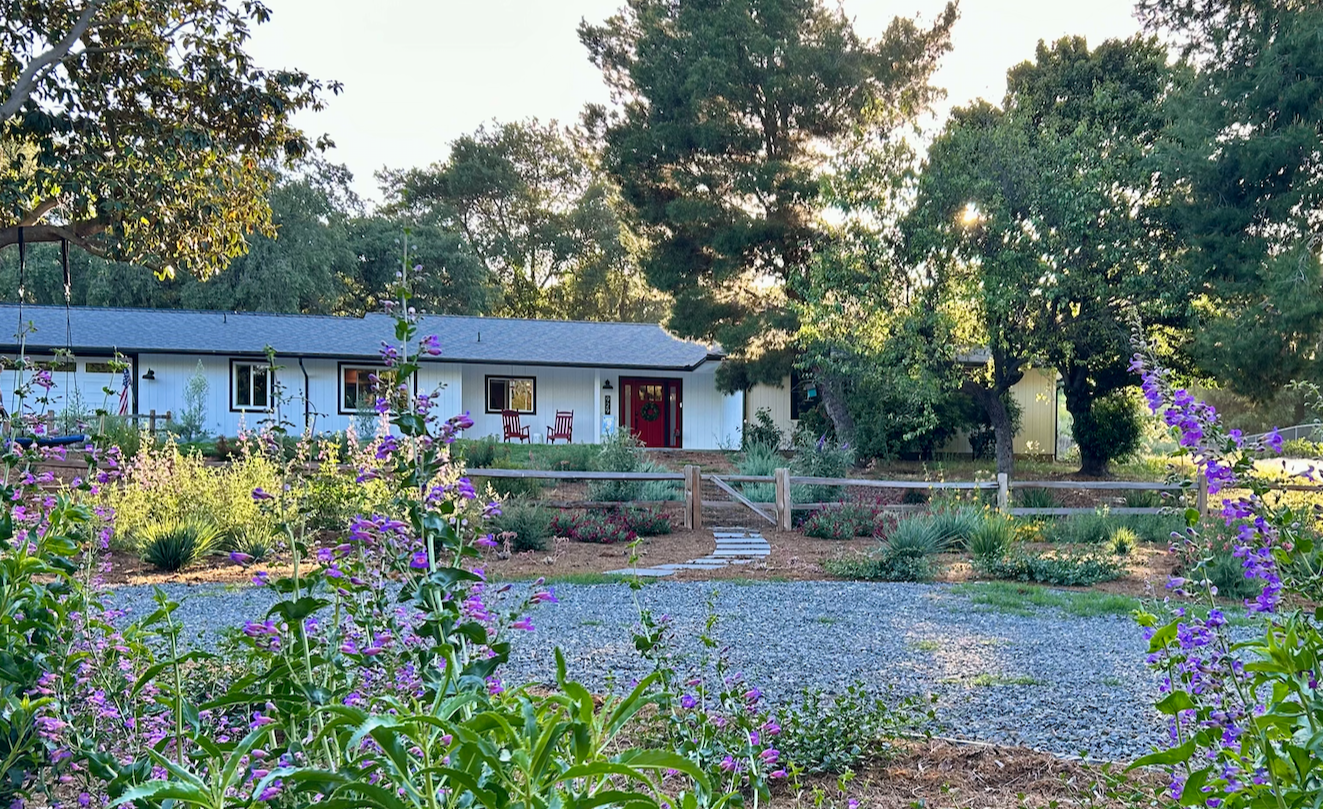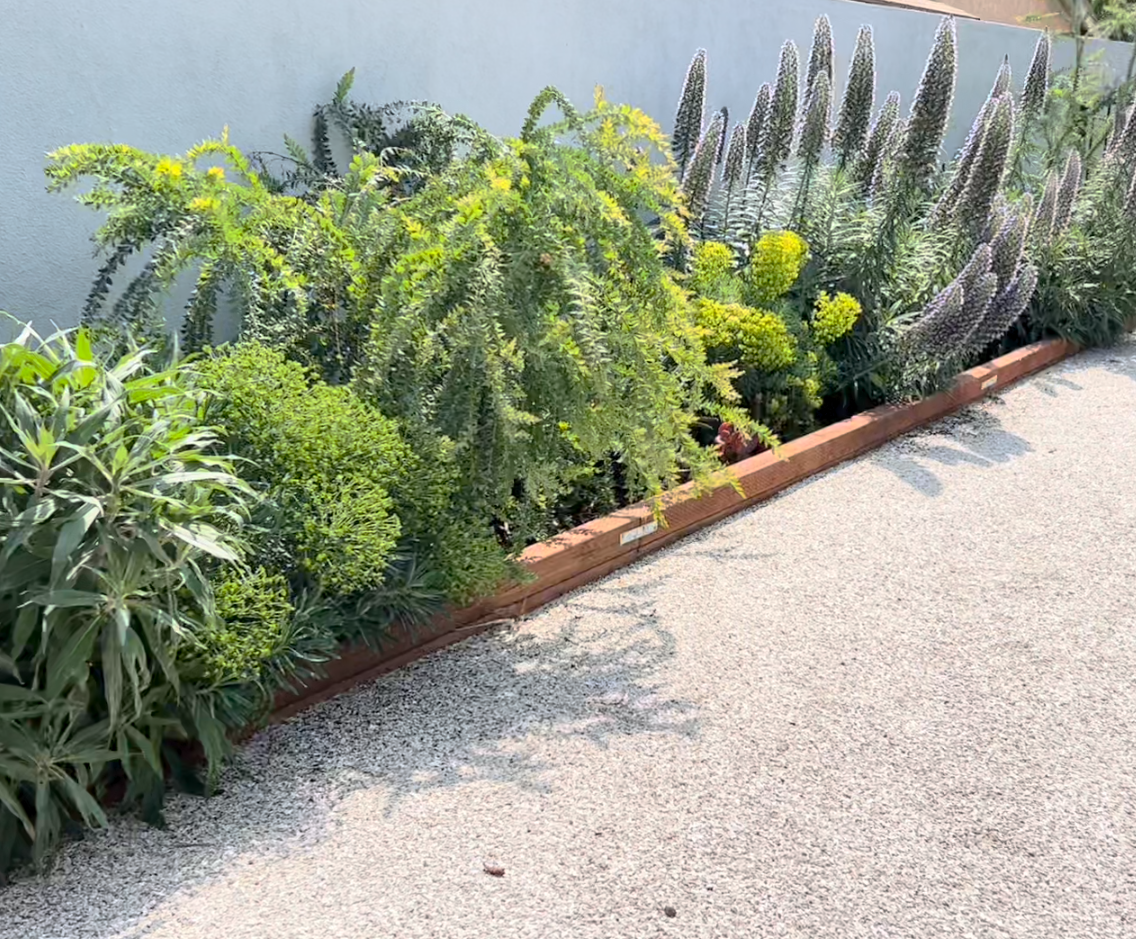I'll be honest, "easy" might be a bit of a misnomer here. No matter how you prune it, landscaping projects can be a big undertaking and usually require a lot of physical labor.
But easy is as easy does. And these lawn alternative choices do big long-term benefits. They are WAY lower maintenance and lower water than traditional lawn after the first year. Plus they're much better for the environment. So long mow 'n blow! We want to keep the gardeners around of course. Just get them on pruners and mulching instead. Read on for the 3 basic material palettes you should consider for lawn alternatives in 2025.
Easy Lawn Alternative 1: Drought-Tolerant Plants
There's a lot of options when it comes to drought-tolerant plants. More than 20,000 to be exact! The extremities of drought-prone climates have forced a huge array of beautiful adaptations in plants. And we are just starting to get a handle on how to use them to successfully replace lawn in California landscaping.From silver-leaved beauties to succulent rosettes you can make just about every classic landscape look with drought-tolerant plants.
Here's some tried & true drought-tolerant plant options...
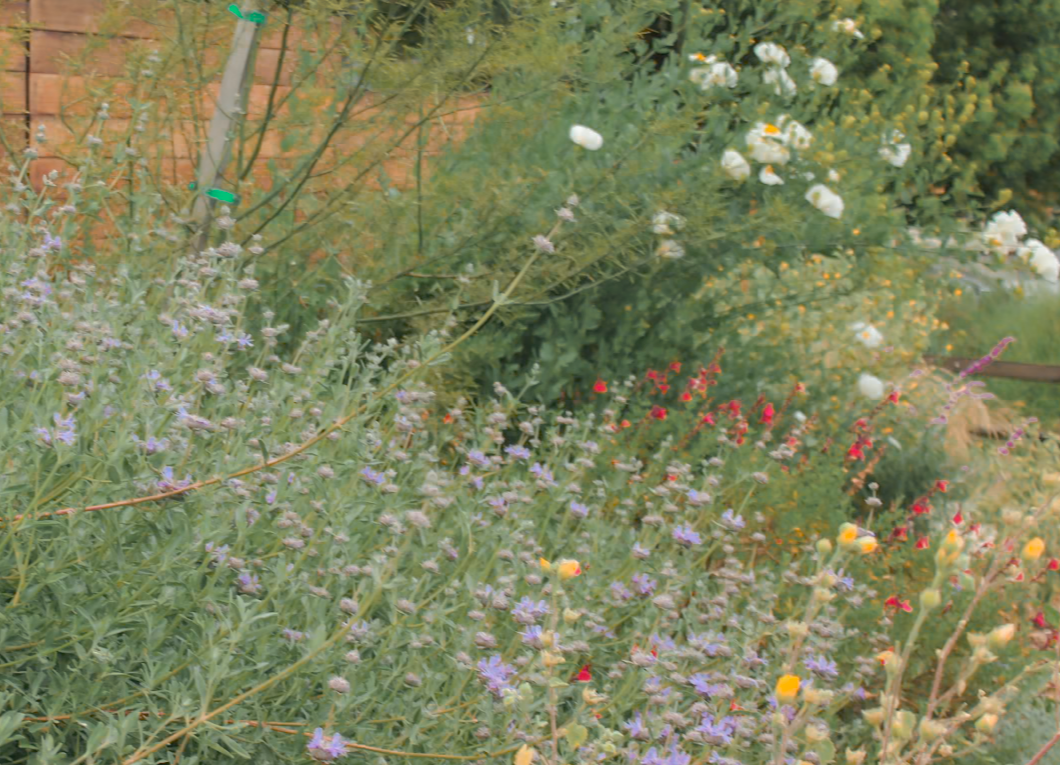
Native Wildflowers
California wildflowers can come with big personality - and, sometimes big summer dormancy cycles - so picking a mix of plants that bloom at different times of year is always a good idea.
- Favorite Native Wildflower Blend: Purple Sage Salvia leucophylla, Salvia Clevelandii, Baby Sage Salvia microphylla (Arizona native), Creeping Germander Sage (Salvia chaemadryoides), Monkey flower (Mimulus auranticus), Penstemon (Penstemon 'Margarita BOP'), Yarrow (Achillea 'moonglow')
These plants are often adapted to native soils. So minimal fertilizer is ideal. Getting their watering regimes right takes practice. Plant in fall where possible.
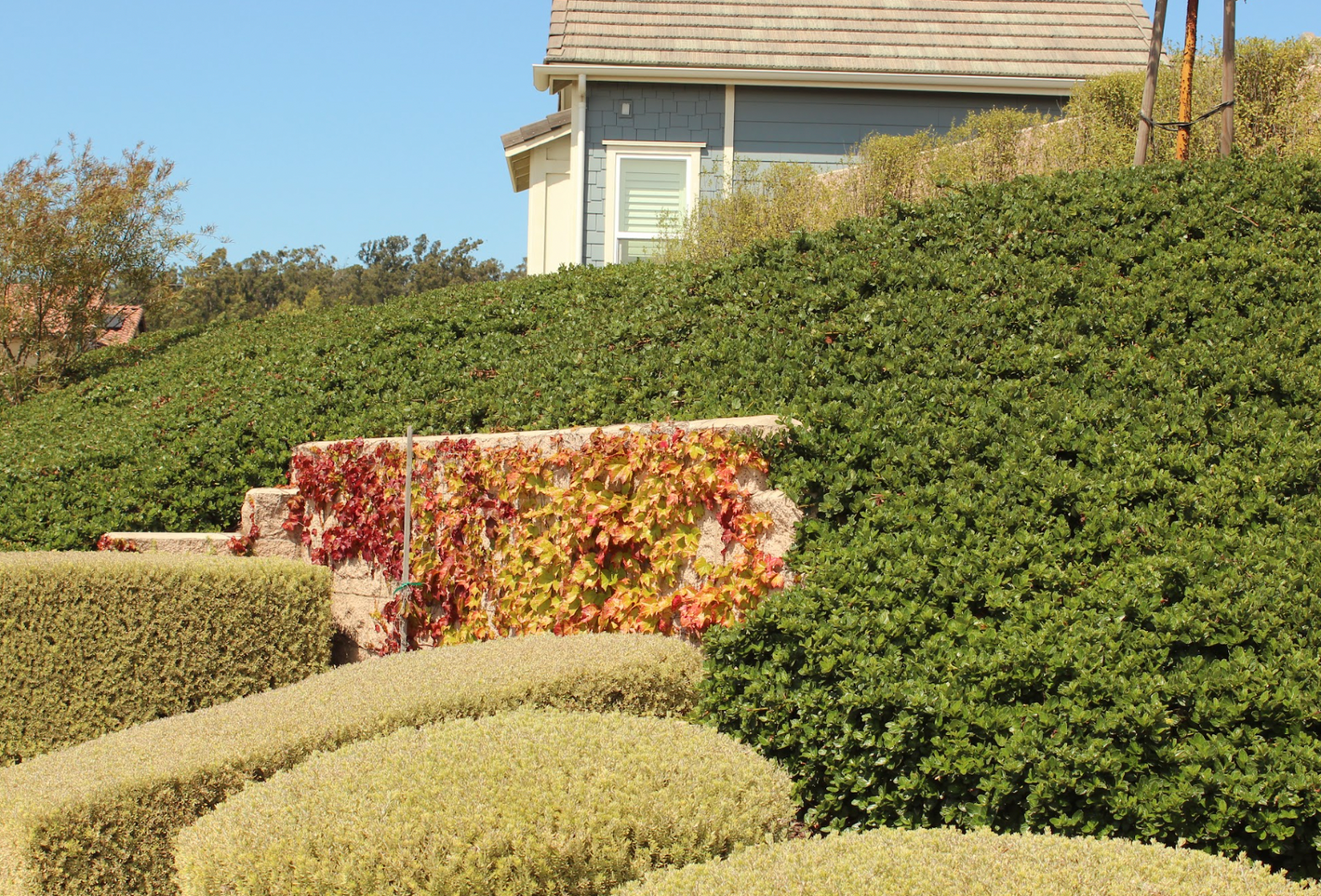
Spreading Groundcover
Spreading groundcover is the cheapest lawn replacement option. If you can get a couple of good spreading Ceanothus or Rosemary plants going you can cover an entire frontyard with 10-20 plants.
- Southern California Groundcover Plants: Rosemary 'Huntington Carpet,' Ceanothus ‘Yankee Point’ and Manzanita 'Pacific Mist'
- Northern California Groundcover Plants: Manzanita 'Emerald Carpet', California Fuschia (Epilobum) and Yerba Buena (Clinopodium douglasii) for shade.
Though not walkable, these plants can cover slopes and spaces you’d like to leave open but not bare. See secrets to success below for planting tips.
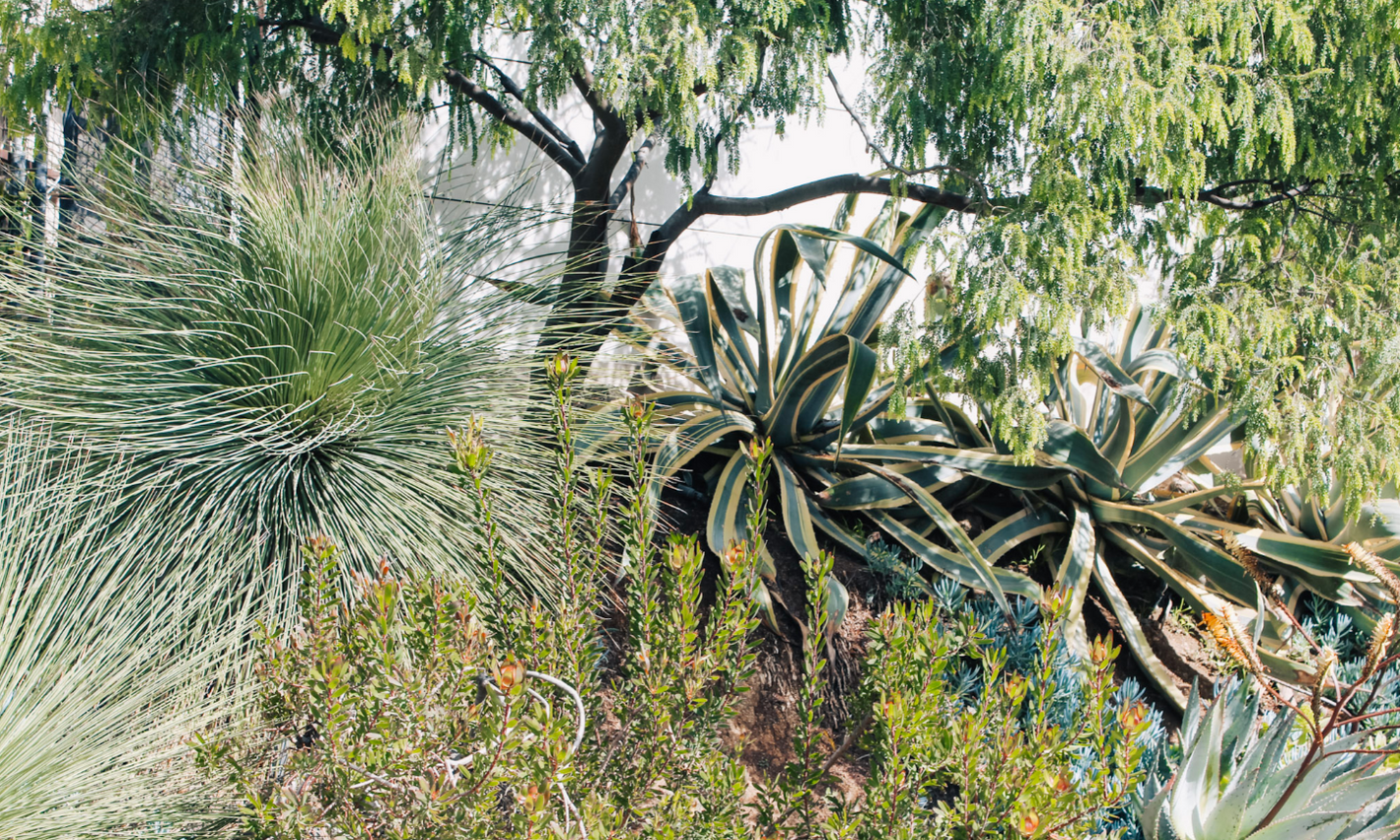
Cactus & Succulents
Planting in winter just before it rains (in all but hot inland regions of California) will make it so that many of these plants can adapt with minimal irrigation. Slopes and rocky soils are these plants native habitat.
- Favorite Cactus & Succulents: Desert Spoon (Dasylirion), Thornless Prickly Pear (Opuntia), Blue Agave (Agave Americana), Foxtail Agave (Agave attenuata 'nova'), Aloe Vera, Aloe Vera, Conebush Leucadendron
If you're in Northern or Central Coastal California, swap true desert cactus (opuntia & dasylirion) for a few sagebrush or variegated Lomandra.

Low-Water Mediterranean
Low-Water Mediterranean plant combinations are one of the best-looking lawn replacement options around. Thanks to the fact that so many plants use silver foliage adaptations for surviving drought. Get a seamless washed-out look without too much effort.
- Favorite Low-Water Mediterranean Plants (with silver or blue foliage): Rosemary ‘Boule’, Lavender ‘Goodwin creek’, Lavender cotton Santolina virens, Catmint Nepeta ‘Walker’s low’, Dwarf olive - ‘little ollie’ or ‘montra,’ Mexican Bush Sage Salvia leucantha, Wormwood Artemisia species
Why do we Combine Plants in Blends?
Mixing a few plant species together (instead of trying to grow all one) lowers maintenance needs significantly over time by improving your garden's overall health. Plus it boosts pollinator habitat by incresasing the total length of time plants are blooming in your yard.Planting Secrets for Succcess
Drought-Tolerant plants often depend on the right kind of soil to survive. Without great soil drainage they can suffer fungus infections, woody bare foliage and often die. Here's essential know-how for installing low-water plants where your lawn used to be:- Improve soil drainage wherever sand & rock isn't already abundant
- Space mid-sized shrubs 3' apart for full coverage in 1-2 years.
- Plant in Fall or Winter where possible, just before seasonal rains.
- Keep Drip Omitters at least 6-12" away from plant trunks. Never water more than 2x week in summer.
If you've already got trees and are looking to fill in around them on slopes, here's a few other ideas: Creeping Raspberry and wild strawberries love to fill-in under dappled shade slopes. You can also plant most California frogfruit varities (Phyla nodiflora & Lippia nodiflora) around citrus and other fruit trees on slopes. They'll take a minimal amount of the water from your tree drippers, and spread hardily; attracting pollinators and preventing erosion.
Easy Lawn Alternative 2: Native Grass and Walkable Groundcover
California native grasses grow and look a little different than old-fashioned lawn. And they require adjusting to to slightly counter-intuitive care regimes. But they require half the water (or less) during droughts and are almost all no-mow or mowing optional.Native lawns are most drought-tolerant when left long during hot times of year. They're significantly cheaper and better for the environment than artificial turf. Like drought-tolerant plants, many of them need some soil prep to thrive.
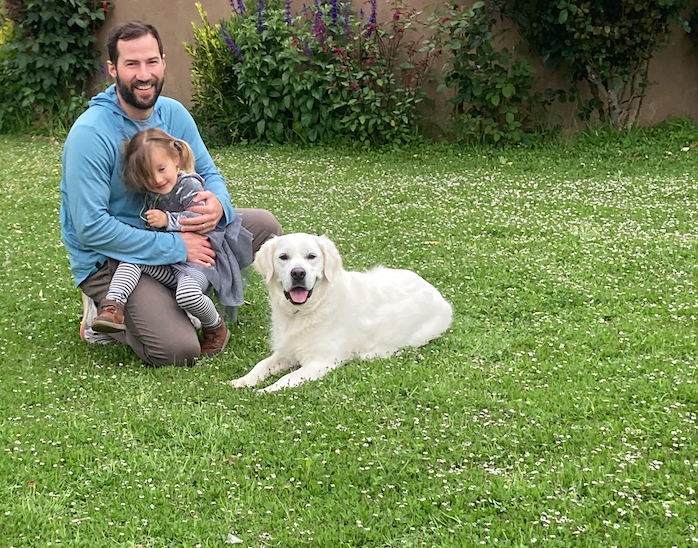
California Frogfruit
AKA: Phyla nodiflora, Lippia repens
Phyla nodiflora (also known as Lippia nodiflora) is a low-growing, succulent groundcover from the verbena family found in warm climates worldwide. New subspecies of California native versions are currently being studied and trialed for sod. It is mowing-optional, pollinator-friendly, and incredibly drought-tolerant.
- Dog-Friendly & takes light sport
- Stays 1-3” high with no mowing
- Thrives with deep watering every 1-2 weeks in summer once mature
All sod and plugs require deep regular irrigation in the first year to fully root. No winter water.
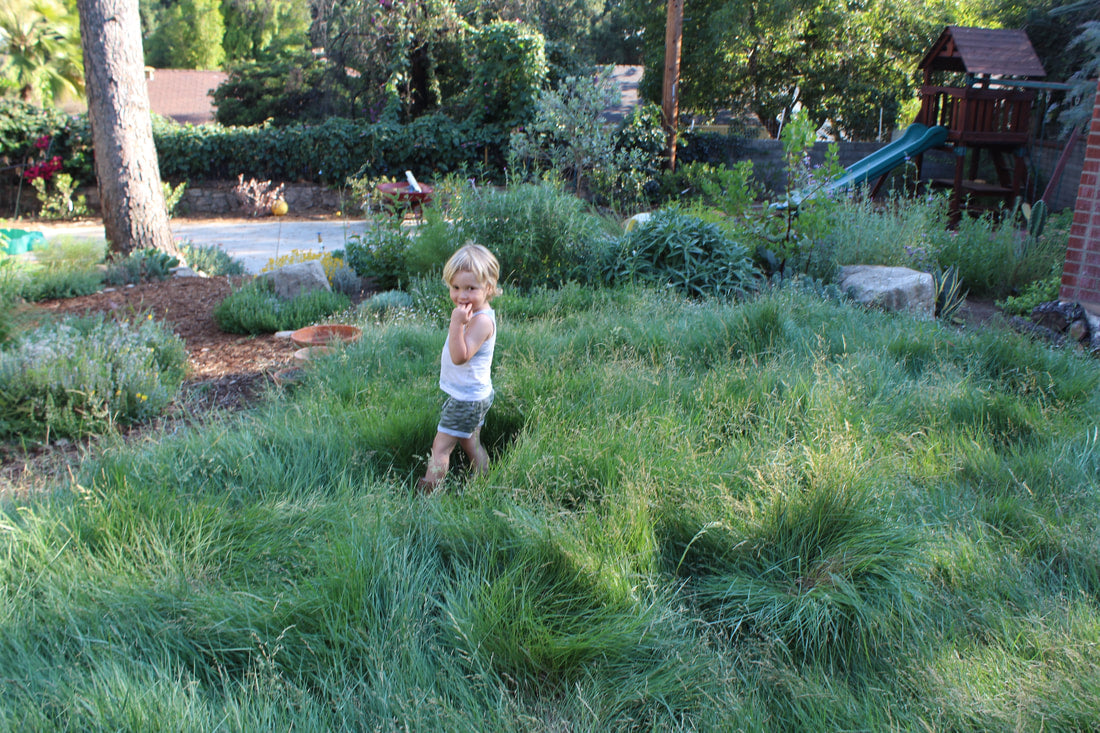
Native Bentgrass
AKA: Agrostis pallens, San Diego Bentgrass, Thingrass
This is the closest thing to conventional sod that California native grass has accomplished so far. But it's still got quirks! The water-savings over conventional lawn start at %50 and increase the longer the height the grass is maintained at.
- Dog-friendly native lawn option
- Mow Regularly to 2-4" high. Causes some some patchiness in summer.
- Or Weed Wack 2x year to keep at natural 12-18" long sweepy look.
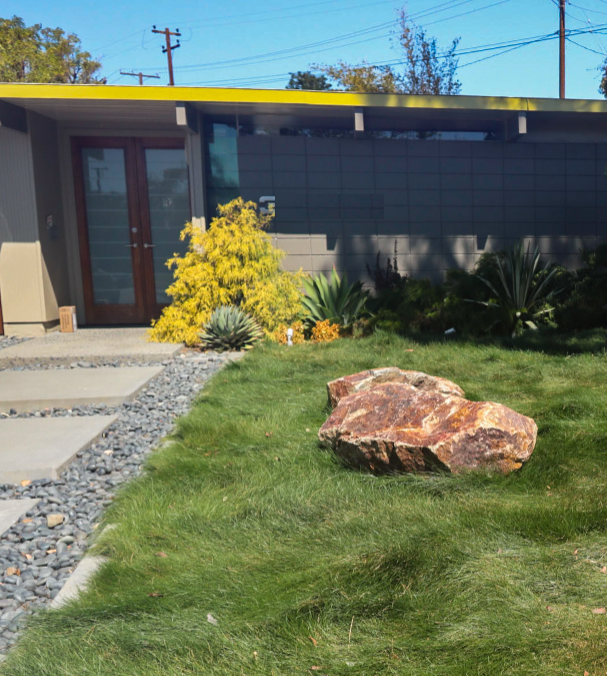
Native Fescue
AKA: Festuca californica, Hillside Fine Fescue Blend, Native Mow-Free
This no-mow meadow grass blend is long and sweepy with finer blades than other native ornamental grasses. It's made from a blend of fescues native to plains all over the West. It is much more drought-tolerant than conventional fescue lawn grasses.
- No-Mow lawn grows to 6-12" high
- Thrives in part-shade or full shade in hot inland areas
- Great for slopes & under Live Oaks
Not tolerant of pets or regular foot traffic.
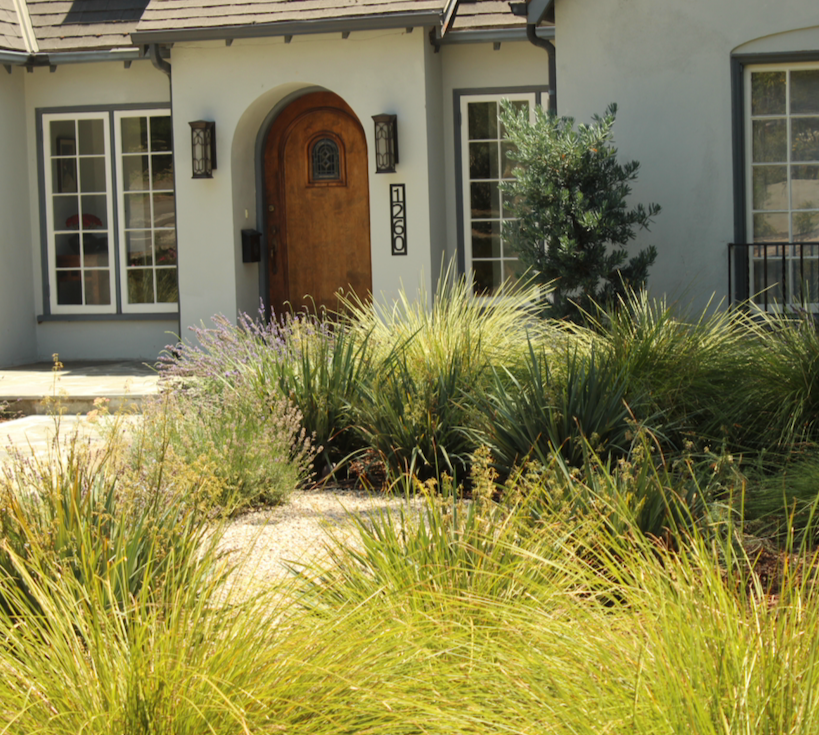
No-Mow Meadow Grasses
The easiest large no-mow meadow grass for replacing lawn is Deer Grass (Muhlenbergia rigens). Deer grass grows very fast and is no fuss. It takes shade or drought. Lomandra works the same if you want a tidier more-succulent look.
- Space Big Grasses 5' for big-time coverage in as little as a year
- Cut back to 6" with weed wacker or hard-rake out dead blades in winter
the big ornamental whorling shape means you can space these plants even more generously and mix with ground covers or Santa Barbara Daisies in between.
Large California Native Ornamental Grasses: Alkali Dropseed (Sporobolous airoides), Elk Gray Rush (Juncus patens 'elk gray'), Gramma Grass (Bouteloua gracilis 'blonde ambition')
Small Walkable Native Grasses: Dune Sedge (Carex pansa), Meadow Sedge (Carex praceagalis) or California Buffalo Grass.
These other small native grasses are simply not conducive to being grown in sod - the easiest way to replace a lawn - so you have to install them with plugs. Installing plugs (small 2" or 4" plant starts) is more time intensive and requires careful weed management to be successful. But for small spaces this delivers great results and a lot more varieties to choose from.
Chances are you've heard of a handful of other lawn alternatives like: silver carpet Dymondia, Dichondra, creeping thyme and baby's tears. In my experience, none of these have proven to have the coverage or have the durability necessary to create a long-lasting groundcover lawn. But that doesn't mean they can't still be trialed if you love the look and have your soil just right. Plus these mostly all work great mixed with stepstones (described below).
Easy Lawn Alternative 3: Waterwise Hardscaping
Permeable hardscapes help rainwater infiltrate back into the landscape. They are one of the BEST things we can do to make a difference in California's water shortages. The more of them that replace pavement and asphalt the better! And if you're replacing some of your lawn with them, that's just fine too. Just make sure you keep the balance of open space and living plants right for your garden.How much is the Right Amount of Hardscape?
50/50 Open Space to Plants is a good balance for a large family or a house with lots of dogs. But much less is needed if you just want a nice seating area or 2 and some paths to wander.30/70 Open Space to Living Plants is a much better balance if you have a smaller household and just want a nice open seating area or 2.
If you want to put down all permeable hardscape remember to add shade to be climate responsible. Removing lawn - even dead lawn - and replacing it with all exposed sand, concrete or gravel heats up the environment and makes more desert. Ultimately you want 2/3 - 3/4 of any exposed areas to be part-shaded or full shaded. This is even more so the case if you're adding artificial turf, which gets as hot (or hotter) than concrete in full sun.
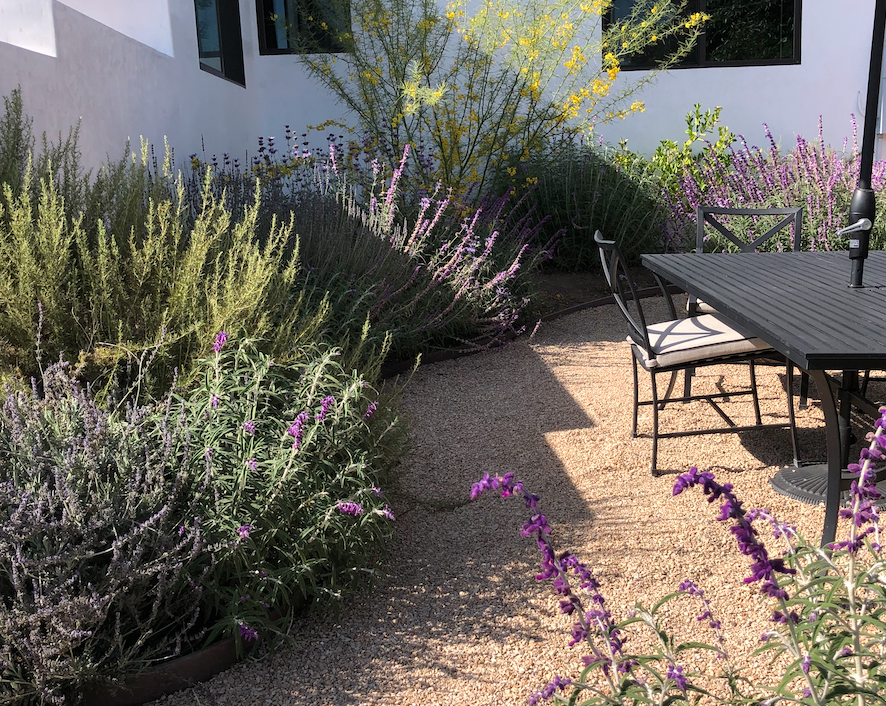
Gravel
Gravel patios and walkways have stood the test of time in European courtyards from Belgium to the Balearic isles. They last much longer than decomposed granite. Use sharp-edged gravel for better rainwater infiltration. Or round pea gravel for a softer feel underfoot. Anwyere from ⅜ to ¾ is a good size. Choose a warm color like ‘California Gold’ for a more glowy color palette. Ensure there's a slight downgrade from pavement to remove any risk of pesky stones underfoot causing slippage.
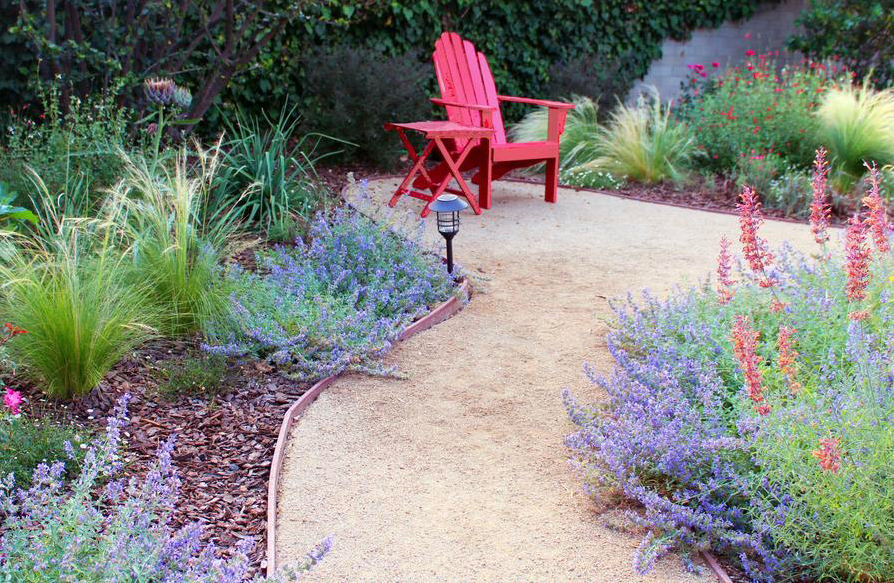
Decomposed Granite
Decomposed granite is a crushed rock dust that can be compacted into smooth flat surfaces. It’s close in compostion to many California natives soils. Golden poppies and cactus love to grow right in it (and so do weeds, so make sure it’s lined well!). Perfect for full sun, DG does tend to discolor if it gets wet or is in regular deep shade. It can also scratch wood flooring if tracked indoors so keep some distance between it and your entry.
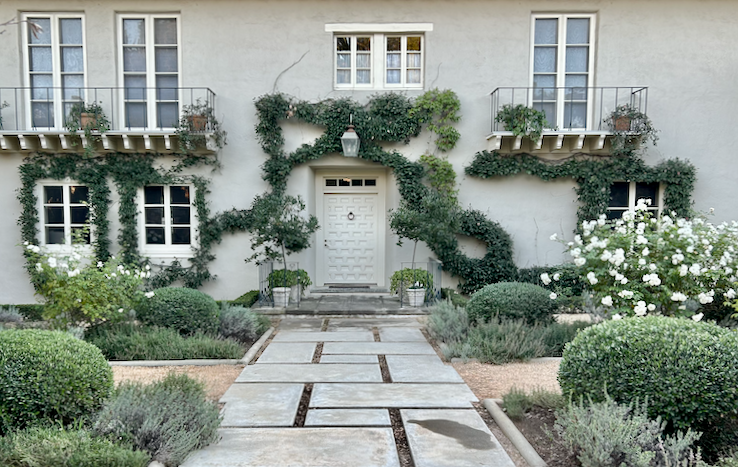
Precast Permeable Pavers
Precast Concrete Pavers are a favorite modern walkway material. You can find these at many stoneyards ranging in size from 12"x18” to 3'x3.’ Or you grab some affordable 1x1’ square stepstones at any garden depot and line them up 2 or 3 tight in a row for the modern look. Fill gaps with gravel, DG, mulch or creeping groundcover. Keep gaps at 3".
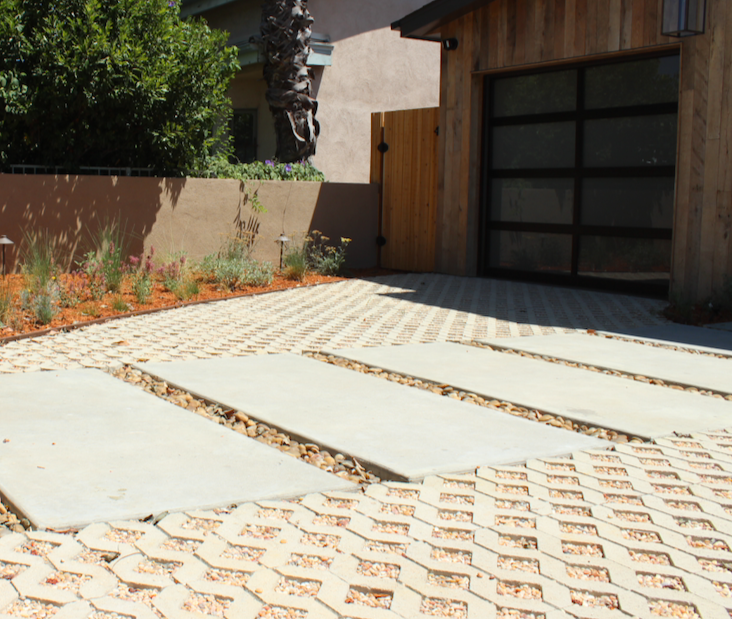
Permeable Pavers - Custom Stonework
Custom Stonework Paver Stones & Permeable Driveways - Many Paver stone companies today offer options with spacers built in on the edges so you can have the refined look of pavers and great rainwater infiltration. Just make sure your masons don’t mortar in the cracks. When it comes to permeable driveways, there are some concerns around the environmental impact of the heavy duty plastic mats used for driveway lawns. Instead try concrete turfstone as shown above.
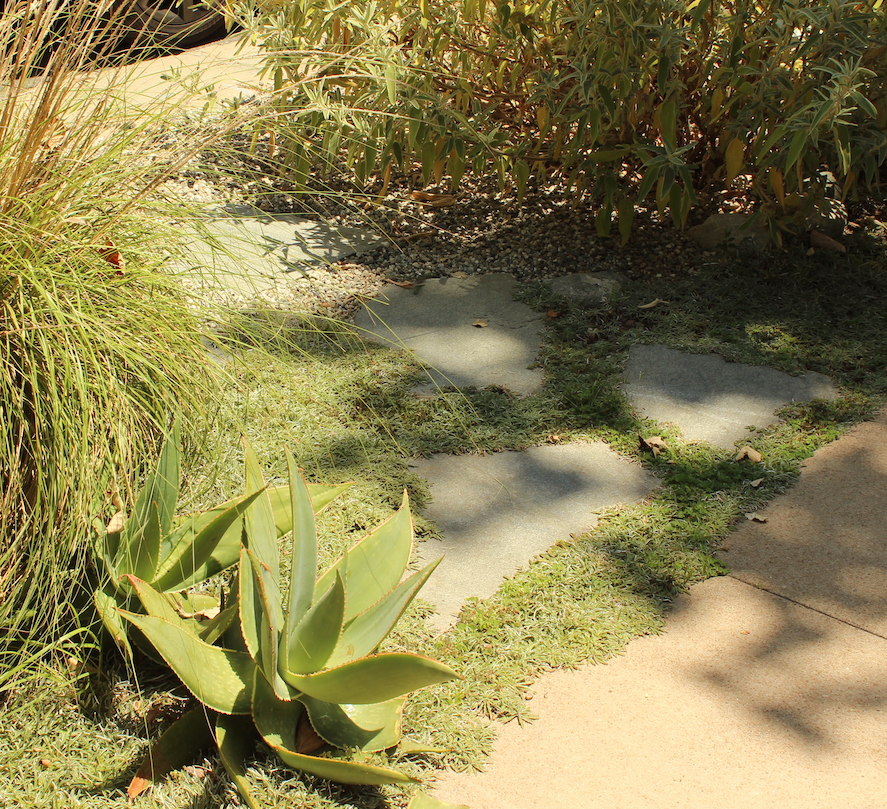
Stepstones & Groundcover
Loose Flagstone offers an affordable and informal look for stepstones. Flagstone is a very thin material so it’s easy to move. It also comes in a huge array of colors and shapes. You’ll want to lay down sand to ensure the stones sit flat on the ground and don’t crack from the pressure of footsteps. Leave gaps at a minimum of 4” for groundcovers to grow between.
Best Groundcovers for growing in between stepstones in California? These include: California Frogfruit, Silver Carpet Dymondia, Creeping Thyme (for part shade), Micro-clover
Quick Layout Tip
Layout courtyards and open spaces with a central accent. Like a birdbath, large decorative planter or firepit for a more formal look. Frame the space with plants that grow 3-5’ to break up open spaces into outdoor dining or lounge areas.Shade Trees to Pair with Patio's: Try Palo Verde, Shoestring or Fernleaf Acacia or Strawberry tree for 20-30' evergreens. 'Shademaster' Locust, Western Sycamore or Jacaranda grow much bigger and give dramatic seasonal color (if you don't mind leaf litter)!
Review Your Options
Whatever the case, lawns are becoming less and less common (and more and more a display of wealth) in the climate realities of today. Whether you're looking to add some native lawn or just put in a climate-smart driveway, you're doing a good thing.Why Does it Matter what You Choose?
About 4 million acres of California is currently old-fashioned lawn. That means turf grass makes up 5% of our state’s ecosystem. An ecosystem that was once epically diverse grassland (with lots of rare and incredible species). So if we plant California native grasses, drought-tolerant plants, or permeable hardscapes shaded by low-water trees than we're actually taking a pretty big step in replanting some environment. While improving the health and drought resiliency of our own beautiful landscapes along the way.Ready to Grow?
Learn about what turf replacement rebates are active in your area. Read Now.
Wrap your brain around native and drought-tolerant plant (and lawn) soil needs. Check out our guide.
See what's possible with California Wild's preplanned gardens. Checkout Before & After's
Our best-selling native lawns and ground covers here at your fingertips. View Collection.
